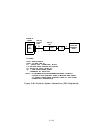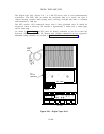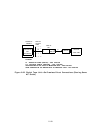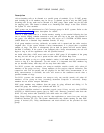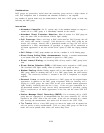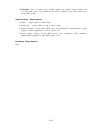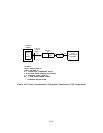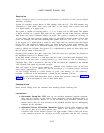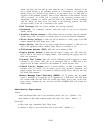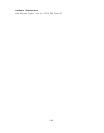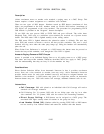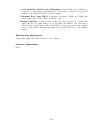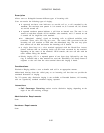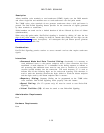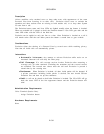Description
Allows incoming calls to reach specific individuals or facilities in the system without
attendant assistance.
System 25 customers reserve blocks of DID numbers from the CO. The DID numbers may
correspond to a PDC FPDC, DGC access code, DDC, or any facility with an access code such,
DIRECT INWARD DIALING (DID)
as a pooled facility or a paging zone.
The system is capable of receiving either 1, 2, 3, or 4 digits over its DID trunks. The number
of digits received on a specific DID trunk will be constant for that trunk; however, different
DID trunks may receive different numbers of digits. The system is capable of receiving
UP
to four digits and then ignoring leading digits as specified to match against system dial
codes. For example, the dial code matching DID number NXX-2157 can be 57, 157, or 2157.
If the System 25 is administered to match on more digits than are received from the Central
Office (CO), the additional leading digits are taken from the 4-digit trunk number. For
example: if a call comes in on DID trunk number 1234, the CO sends two digits (77) over this
trunk to identify the recipient, and System 25 is administered to match on three digits, then
the call will be routed to dial code 277.
Incoming DID numbers that don’t match any valid dial code may optionally be directed to
the Attendant Console or to Reorder Tone.
If the DID number received is a valid dial code, the caller is provided either Ringback Tone,
Busy Tone, or the tone from a pooled facility (e.g.,
Dial Tone) as soon as addressing is
completed. Busy Tone is provided if and only if the call cannot be completed to the intended
voice terminal and cannot be provided coverage.
DID calls appear at System Access buttons on
multiline voice terminals (they do not have
other button appearances).
These calls can be transferred to a covering station, answered
via Call Pickup, directed to a DGC Group, or given “call hunting” or “call following”
treatment. A DID call is
not automatically covered on the Attendant Console.
DID trunks may utilize DID Immediate Start or Wink Start protocols. Refer to Section 9,
Glossary, for a brief description of each of these trunk types.
Considerations
Direct Inward Dialing frees the attendant from handling certain incoming calls.
Interactions
● Attendant Camp-On: DID calls are not provided Attendant Camp-On treatment.
They will not appear on the Direct Trunk Attendant Console Return-On-Busy or
Return-On-Don’t-Answer buttons or on the Switched Loop Attendant Console Loop
buttons
unless they are first answered at the attendant position and are subsequently
extended by the attendant.
● Attendant Direct Extension Selection: Selector Console LEDs respond to DID
calls just as they do for other outside calls.
When a user answers a DID call, the
associated LED on the Selector Console will light steadily. When a DID call arrives
at the attendant position for coverage, the LED associated with the call coverage
2-127



